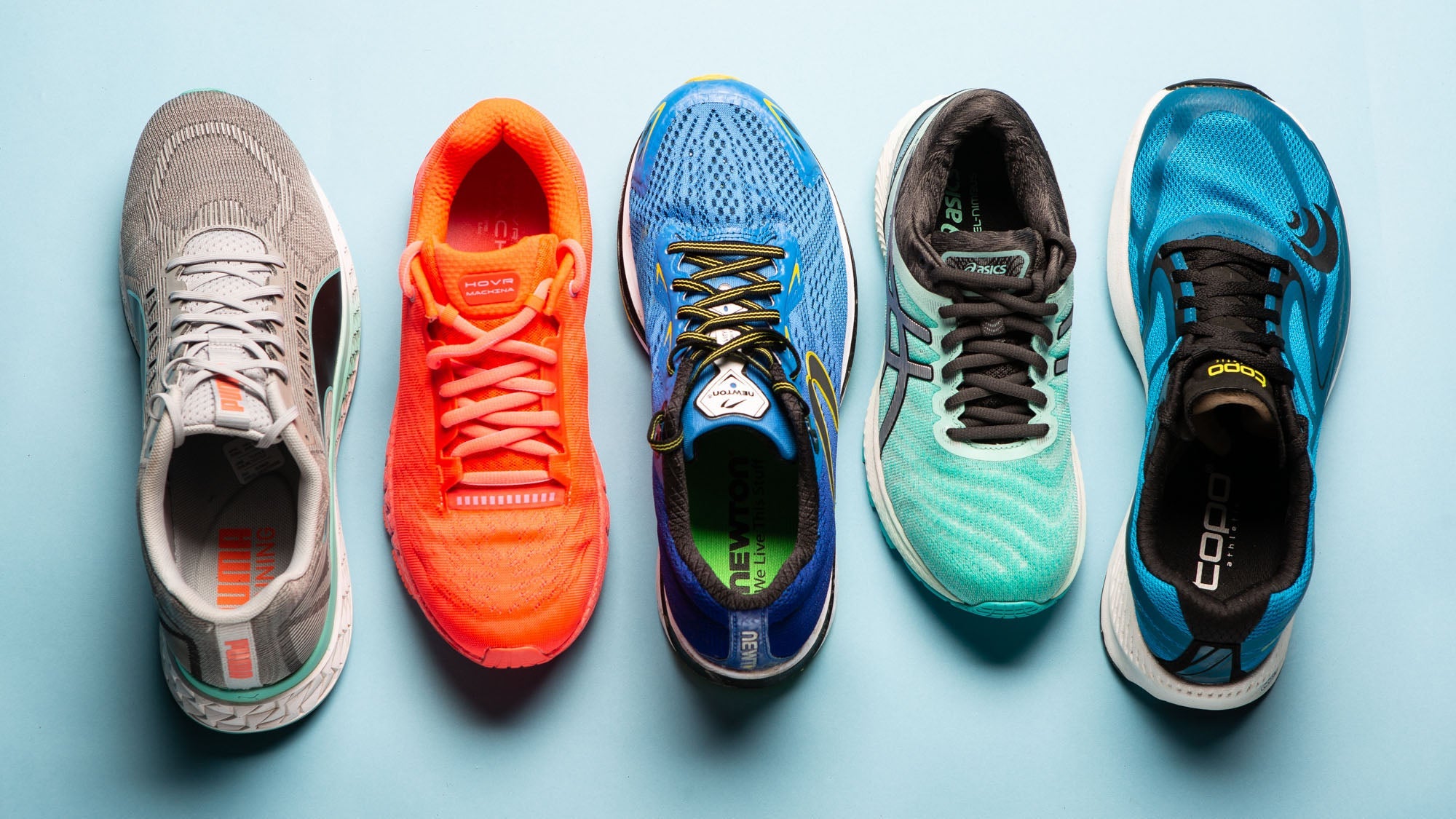“Energy return” became mainstream in our vocabulary about seven years ago following the introduction of the Adidas Boost, but it has been a desired characteristic of running shoes for far longer. Today’s “super shoes” stand at the pinnacle of bouncy cushioning, but many less expensive and more durable training models are utilizing rebounding foams, experimenting with plates, or relying on mechanical reaction systems. One truth about this category of shoe: your experience will vary from your training partner’s, even more than in other shoes, as the rebound is closely tied to the timing of certain strides. So experiment with multiple models until you find one that makes you feel like they are an enhanced extension of your feet, letting you fly.
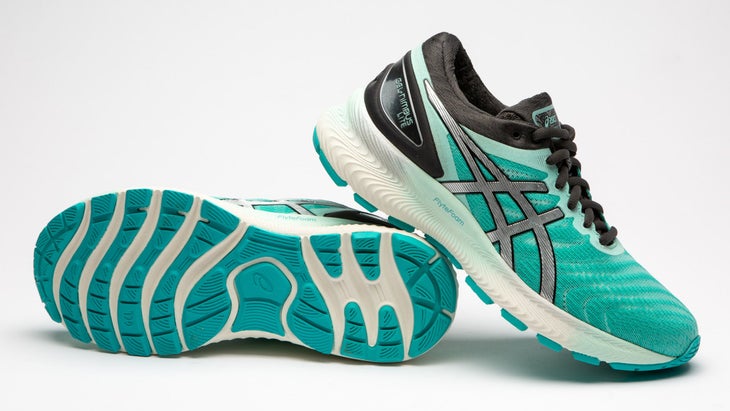
Asics Gel Nimbus Lite
- Weight
- 9.7 oz (M) 8.6 oz (W)
- Drop
- ~13 mm
- Price
- $150
At a glance: Durable cushioning in a lightweight, comfortable and performance-oriented vehicle.
From a company that has, in recent history, been overbuilding its shoes, the “Nimbus on a diet” got resounding acceptance as an “athletic and springy” trainer that could also pass as a race shoe for some.
The one-piece, encapsulated-gel FlyteFoam midsole worked well for its cushioning, comfort, flexibility and road feel. Although one tester complained the cushioning was in the wrong place and threw off their footstrike, another found them one of the best-riding shoes he’s ever worn. “They were soft, smooth, flexible,” he said. “I’m a heavy guy and this shoe is one of the few that cushions and rolls just right for my stomping stride.” Several testers reported that heel-to-toe transition of the Nimbus Lite was seamless and some found themselves adding extra distance to their runs.
As extra credit, nearly all of the breathable, secure and comfortably-fitting upper is constructed with recycled, sustainable fiber material that increases the durability. The shoe is true to size but the forefoot isn’t wide enough to allow for full toe splay.
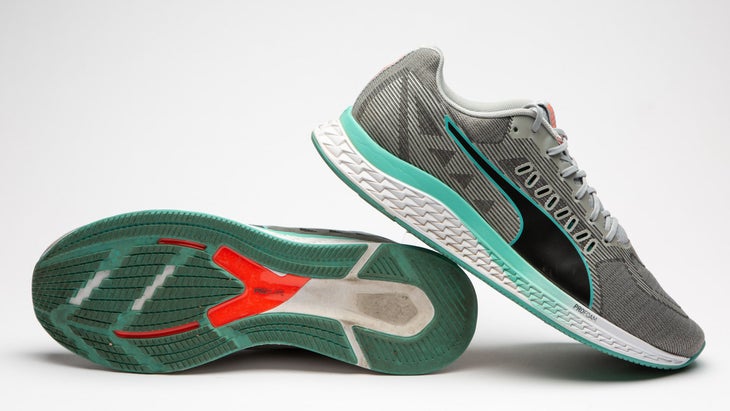
Puma Speed Sutamina
- Weight
- 10.4 oz (M) 8.5 oz (W)
- Drop
- ~12 mm
- Price
- $100
At a glance: Light shoe for light distances and light runners doing speed work—or for fitness and fashion.
What is effectively Puma’s reentry into running after a couple years’ absence is this light trainer with a bit of pop from an embedded plastic plate and its ProForm, energy-returning midsole. While testers universally raved about the shoe’s aesthetics, the feedback was rather “meh” on the shoe’s performance. The plastic midsole plate did help to get testers up on their toes quickly when they used the shoes for up-tempo running, but the transition felt awkward.
Testers characterized the Speed Sutamina as more of a fitness shoe that wasn’t all that durable or performance-oriented. The midsole ride was surprisingly somewhat standard, and didn’t have enough cushioning for middle or heavyweight runners or for comfort over runs longer than a 10K. The upper fit was true to size but seemed to be finicky, not wrapping all foot shapes well and not comfortable for those with wide feet or for testers who wanted to spread their toes.
“This is one of those pairs of shoes I would wear more for general fitness activities,” summed up a tester. “I would probably walk around in them for comfort—and for that purpose, they deliver just fine.”
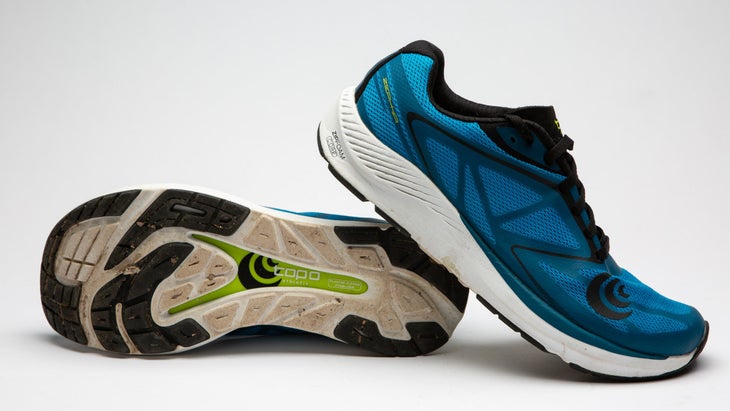
Topo Athletic Zephyr
- Weight
- 9 oz (M) 7.4 oz (W)
- Drop
- ~5 mm
- Price
- $130
At a glance: Natural running geometry gets a little boost and stability to go the distance quickly.
Topo Athletic, which makes shoes with low heel height and room for your toes, added a slight twist to its recipe for natural running, putting in a 5 mm drop between the 28 mm heel and 23 mm forefoot, along with a midsole-stabilizing plate to contain forefoot motion and boost propulsion.
Testers found this execution effective but said the performance could just as easily be attributed to the wide toe box and ZipFoam, a high-rebounding material embedded in the midsole. “It’s fast because it’s light and comfortable, and maybe the stiff insert helps,” said one skeptic. Still, the decision was unanimous that the springy, proprietary midsole compound was a bonus—testers found the balance of cushiness and stability was well suited for runs as far as 50K.
The jury was out, however, on whether the elastomer propulsion plate aided or inhibited performance. Testers warned that the lack of flexibility in the plate detracted a bit from the experience for some. “The plate seemed to try to control my foot motion during some landings, causing somewhat awkward transitions to the toe-off,” one tester described, yet noted, “At other times, it felt stable and fast.”
The fit and hold of the mesh upper with printed overlays was generous and secure and worked well with Topo’s signature wide toe box. The combination of that natural-movement fit with the plush, energetic midsole and fast-rolling, up-curved toe creates a unique ride that will speed you along economically and comfortably—if it fits your stride.
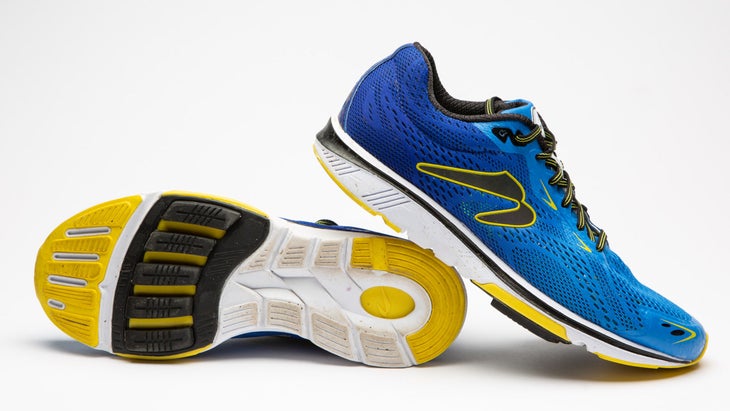
Newton Gravity 9
- Weight
- 8.6 oz (M) 7.2 oz (W)
- Drop
- ~3 mm
- Price
- $175
At a glance: Forefoot-encouragement from a super lightweight, race-compatible speedster.
Rather than relying on the properties of a foam, Newton creates energy return mechanically, using lugs that protrude from the outsole under the forefoot. When weighted, they compress into the midsole, providing deep cushioning, then bounce back to assist propulsion.
Tester feedback for Newton shoes depends on their familiarity with the brand and their running form. Those who had tried Newton and run with a stride more weighted on the forward part of their feet tend to gravitate to the responsive “Action/Reaction” lugs, while heel strikers find them awkward. “I’m sure the pronounced cushioning under the ball serves a purpose but I never got used to it” was one such response. In contrast, one said, “Once I got my feet underneath me, I felt like I was propelled on springs.”
Fortunately, some qualities of the Gravity 9 defy experience and form. All testers appreciated the lightness in weight and comfort of the gender-specific seamless upper, its snug-fitting 3D engineered mesh and the hold of the flat laces. The Gravity 9 is probably a better choice for those doing tempo work or racing, as it shines brightest at a faster pace, when you are up on your toes and can get the feedback and energy return from the forefoot lugs.
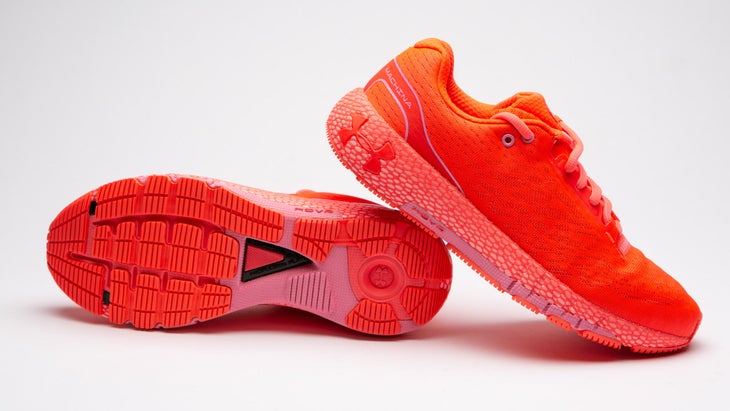
UA HOVR Machina
- Weight
- 10.4 oz (M) 8.7 oz (W)
- Drop
- ~8 mm
- Price
- $150
At a glance: Comfort of the long run with a flowing and energetic package, complete with real-time coaching connectedness.
The Machina won over our test team for the comfortable ride and was adored for its reliability and smooth qualities—despite its looks, which were deemed somewhat egregious. One tester said of the garish color: “Made me feel like I didn’t want any of my friends to see me wearing it—but the ride was still worth it.”
The HOVR’s energy-returning midsole features a two-pronged carbon-filled Pebax propulsion plate for quick transitions to the forefoot and toe-off. Comfort and pop also stem from the midsole mix of a waxy synthetic foam they call HOVR, that is both resilient and durable. The Machina, for the first time, has a full-width layer of that HOVR foam, open on the sides, which produces a responsive-while-plush “glide” you can feel on your first stride. Two testers said that this was the first Under Armour shoe they had tried and really enjoyed the ride.
Testers appreciated the traction and durability of the solid carbon rubber outsole and rearfoot pods. Ditto the digital connection to MapMyRun for the tracking of their runs and cadence and the tie-in with UA’s form coaching app.



